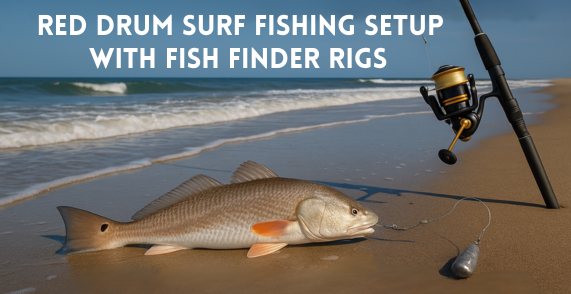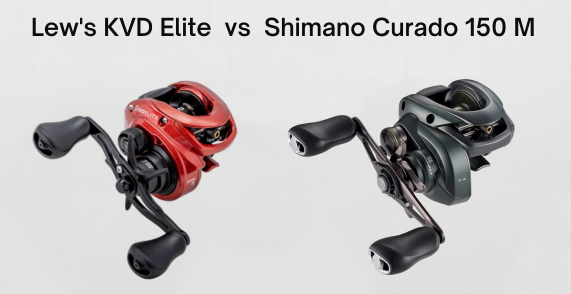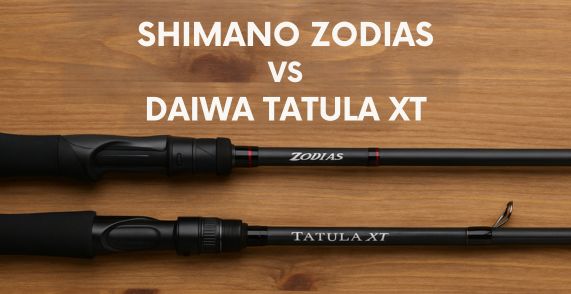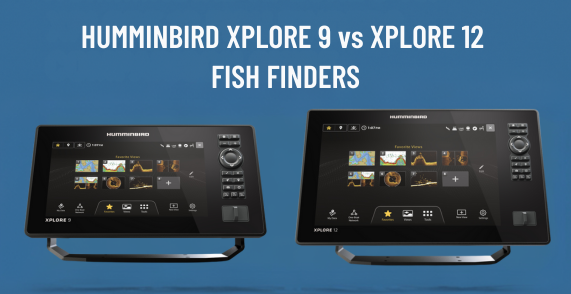In This Post
- 1 Key Takeaways
- 2 Understanding Red Drum Behavior for Better Catches
- 3 Rod and Reel Selection for Surf Fishing
- 4 Building the Perfect Fish Finder Rig
- 5 Sinker Selection Based on Conditions
- 6 Top Baits for Red Drum Success
- 7 Reading the Beach for Red Drum Hotspots
- 8 Casting and Fishing Techniques
- 9 Troubleshooting Common Challenges
- 10 Final Tips for Red Drum Surf Fishing Success
Key Takeaways
- Fish finder rigs work exceptionally well for red drum in surf fishing by allowing natural bait presentation while keeping contact with the bottom where these fish feed.
- Water temperature directly affects red drum habits – they’re most active in 61-70°F water and move to deeper areas during daylight hours when temperatures rise above 75°F.
- For surf fishing red drum, use a 10-12 foot heavy power rod with a reel that holds at least 200 yards of 25-pound braided line.
- Fresh cut bait, especially mullet, spot, or whiting, creates the strong scent trails needed to attract red drum from distance.
Red drum (also called redfish) rank among the most sought-after catches for surf anglers along the Atlantic and Gulf coasts. These strong fish deliver exciting fights, particularly when caught from shore.
At Fishing Zenith, we’ve found that successful red drum surf fishing starts with the right setup, and the fish finder rig produces the best results.
Understanding Red Drum Behavior for Better Catches
1. Seasonal Patterns and Temperature Effects
Red drum are opportunistic feeders found in shallow coastal waters, estuaries, and tidal creeks. Water temperature strongly influences their behavior, with 61-70°F being ideal. During this temperature range, red drum often school and bite most consistently.
When water temperatures exceed 75°F, these fish typically move to deeper water during daylight hours, returning to shallow areas at night to feed. This temperature-driven pattern means you’ll need to adjust your fishing schedule based on season and time of day.
2. Tidal Influences on Feeding Activity
Tides greatly affect red drum feeding patterns. These bottom-feeding fish use changing tides to access new feeding areas. During high tides, they may venture onto newly flooded flats to hunt for crabs and small baitfish. As the tide falls, they’ll move back to deeper cuts and troughs.
Focus on the first hours of an incoming tide after low water, as this often triggers active feeding when red drum follow the rising water to find new feeding opportunities.
3. Best Times of Day for Maximum Success
The most productive times to target red drum typically combine favorable tidal conditions with low light periods. Dawn and dusk are prime times, especially when they coincide with a changing tide.
During summer months when water temperatures peak, night fishing becomes highly effective as red drum move into shallower water after dark.
In fall, which marks peak season for red drum surf fishing, the feeding windows expand as water temperatures moderate, creating productive fishing throughout more of the day.
Rod and Reel Selection for Surf Fishing
1. Ideal Rod Specifications (Length, Power, Action)
When targeting red drum from the surf, your rod choice significantly impacts your success.
The most effective setups use rods in the 10-12 foot range, which provide the necessary power to fight strong fish while allowing you to cast heavy tackle beyond the breaking waves.
These longer rods serve two main purposes: they help you achieve the distance needed to reach fish in deeper water, and they provide the strength to pull large red drum through the surf.
For best results, select rods with medium-heavy to heavy power ratings, which offer the backbone needed to handle adult red drum that can exceed 40 pounds.
Rod action matters too—a fast action rod provides the sensitivity needed to detect subtle bites while still offering enough power in the lower section to control large fish.
This balance of sensitivity and strength is essential when targeting red drum, as they often take bait with a gentle pick-up before making strong runs.
2. Reel Types and Sizes for Different Conditions
Both spinning and conventional reels work well for red drum surf fishing, each with specific advantages. Spinning reels are typically easier to cast, making them good choices for beginners or when fishing in windy conditions. They’re also less prone to backlashing during casts.
Conventional reels, while requiring more practice to master, typically offer stronger drag systems and better line capacity, which becomes important when fighting larger red drum.
Whichever style you choose, make sure your reel can hold at least 200 yards of line, as red drum are known for making powerful, extended runs when hooked.
For spinning reels, sizes in the 4000-6000 range provide the right balance of capacity and power. If using conventional reels, select models designed for medium-heavy saltwater applications with smooth drag systems rated for at least 15 pounds of pressure.
3. Line Selection: Braided Main Line vs. Mono Leaders
A 25-pound braided main line has become standard for red drum surf fishing. Braid offers better casting distance, excellent sensitivity for detecting bites, and the thin diameter allows you to pack more line on your reel.
The minimal stretch in braided line also provides direct connection to your terminal tackle, improving hook-setting power.
However, braided line alone isn’t the complete answer. Connecting your braid to an 80-100 pound monofilament or fluorocarbon leader (3-5 feet long) offers several benefits.
This heavier leader provides abrasion resistance against the fish’s rough mouth and protection from the sandy bottom and potential structure. The leader also adds some shock absorption when fighting powerful fish, helping to prevent hook pulls during sudden lunges.
Building the Perfect Fish Finder Rig
1. Step-by-Step Assembly Instructions
The fish finder rig works exceptionally well for red drum because it allows natural bait presentation while keeping your offering on the bottom where these fish feed. Here’s how to put it together properly:
- Start with your main line (25-pound braid recommended)
- Thread a sinker slide onto your main line
- Add a plastic bead (6-8mm) below the sinker slide
- Tie a strong barrel swivel to the end of your main line
- Attach your 80-100 pound monofilament leader (3-5 feet) to the other end of the swivel
- Tie an 8/0 to 10/0 circle hook to the end of your leader
- Clip your pyramid sinker (6-10 oz depending on conditions) to the sinker slide
This setup allows the sinker to move independently of your bait, meaning when a red drum picks up your offering, it won’t immediately feel the weight of the sinker—a key advantage that results in more hookups.
2. Leader Length and Material Selection
Leader length for red drum should typically be between 3-5 feet. This length creates enough separation between your sinker and bait for a natural presentation while still remaining manageable for casting.
Shorter leaders (closer to 3 feet) work better in rougher surf conditions, while longer leaders can be advantageous in calmer waters.
Material selection matters greatly—80-100 pound monofilament is standard for red drum leaders. This heavy mono provides the abrasion resistance needed when fighting large fish in sandy, sometimes structure-filled environments.
While fluorocarbon offers greater invisibility, the added expense typically isn’t necessary for red drum fishing, as these fish rely more on scent than sight when feeding.
3. Circle Hook Selection and Benefits
Circle hooks in sizes 8/0 to 10/0 are ideal for adult red drum. These larger hook sizes match the mouth size of these fish and provide the gap needed to secure solid hooksets.
Non-offset circle hooks are strongly recommended as they significantly reduce deep-hooking incidents, which is crucial for the conservation of red drum, especially when practicing catch and release.
The main benefit of circle hooks is their self-setting design. When a red drum takes your bait and moves away, the hook naturally rotates and sets in the corner of the mouth, virtually eliminating gut-hooking.
This requires a different hooking technique—rather than jerking to set the hook, simply apply steady pressure as the fish moves away, allowing the hook to find its position naturally.
4. Bead and Swivel Placement
Proper placement of the bead and swivel is essential for the fish finder rig to function correctly. The bead serves as a buffer between the sinker slide and the swivel, preventing the metal components from damaging each other during the cast and retrieval.
A 6-8mm plastic bead is ideal, with clear or amber colors being most common, though some anglers use brightly colored beads as additional attractants.
The barrel swivel serves dual purposes: it prevents line twist during the retrieve and acts as a stopper for the sliding sinker mechanism.
Choose a sturdy swivel rated for at least 100 pounds of pressure to ensure it can withstand the forces generated during powerful casts and when fighting large red drum.
Sinker Selection Based on Conditions
1. Pyramid Sinkers for Standard Conditions
Pyramid sinkers are the traditional choice for red drum surf fishing, and with good reason. Their four-sided design helps them dig into sandy bottoms and hold position even in moderate surf conditions.
For red drum fishing, the weight of your pyramid sinker should typically range from 6 to 10 ounces, depending on the strength of the current and waves.
The main advantage of pyramid sinkers is their ability to quickly anchor your bait in place after casting. When fishing the surf for red drum, keeping your bait’s position on the bottom is crucial, as these fish are primarily bottom feeders.
A properly sized pyramid sinker will keep your bait stationary while still allowing the fish finder rig to function effectively, giving red drum the chance to pick up your bait without feeling immediate resistance.
2. Sputnik Sinkers for Strong Currents
When conditions become particularly challenging with strong currents or heavy surf, pyramid sinkers may not provide enough holding power.
In these situations, sputnik sinkers (also called spider weights or claw sinkers) become the preferred option. These specialized sinkers feature wire arms that deploy upon landing, digging firmly into the sand and providing superior anchoring ability.
The main advantage of sputnik sinkers is their ability to hold position in conditions where other weights would roll or drag along the bottom.
This stability ensures your bait remains in the strike zone, even in the roughest conditions. While typically more expensive than standard pyramid sinkers, the additional cost is worthwhile when fishing in strong current or heavy surf situations.
3. Weight Selection Based on Surf Strength
Selecting the appropriate sinker weight is a critical but often overlooked aspect of red drum surf fishing. Using too light a sinker will result in your bait drifting with the current, potentially out of the strike zone.
Conversely, using an unnecessarily heavy sinker can make casting more difficult and may reduce your ability to detect subtle bites.
As a general rule, start with the lightest sinker that will hold bottom in the current conditions. In moderate surf with light current, a 6-ounce pyramid sinker may be sufficient. As conditions intensify, gradually increase to 8 or even 10 ounces as needed.
The goal is to use just enough weight to maintain position without overloading your casting setup.
Conditions can change throughout your fishing session, particularly with shifting tides. Always be prepared to adjust your sinker weight as needed to maintain optimal bait presentation.
Top Baits for Red Drum Success
1. Fresh Mullet: The Ultimate Red Drum Bait
Fresh mullet consistently proves to be the top bait choice for red drum surf fishing. These oily, abundant baitfish create a powerful scent trail that red drum find irresistible.
When using mullet as bait, the freshness factor cannot be overstated—fresh-caught mullet will significantly outperform frozen options.
To prepare mullet for red drum fishing, cut it into chunks approximately 2-3 inches long. The head section is particularly effective, as it contains additional oils and scent glands.
For smaller pieces, hook through one eye and out the other; for larger chunks, hook through the meaty portion, ensuring the hook point is exposed for a clean set.
2. Spot and Whiting: Effective Alternatives
When mullet aren’t available, spot and whiting (also known as sea mullet or kingfish) make excellent alternative baits for red drum. Like mullet, these fish are natural prey items for red drum and provide the oily flesh that creates an attractive scent trail in the water.
Spot and whiting can be prepared similarly to mullet—cut into appropriate-sized chunks with the head being particularly desirable.
The size of your bait should match the size of the red drum you’re targeting, with larger chunks for bull reds and smaller pieces for slot-sized fish.
3. Menhaden and Other Oily Baits
Menhaden (also called bunker or pogies) create perhaps the strongest scent trail of all red drum baits. These extremely oily baitfish are excellent choices, particularly in turbid water conditions where scent becomes more important than visual appeal.
When using menhaden heads, a specific hooking technique is recommended: insert the hook through the lower jaw and out between the eyes.
This prevents the mouth from opening during the cast and acting like a parachute, which would make it difficult for your bait to hold bottom in current.
4. Proper Bait Cutting and Hooking Techniques
Regardless of which bait you choose, proper cutting and hooking techniques are essential for red drum success.
Cut baits should be sized appropriately—typically 2-3 inches for adult red drum. This size offers enough scent dispersion while remaining manageable for casting.
For meat sections of fish, hook just above the spine with as much of the hook exposed as possible for a clean hook-set. For crabs, another excellent red drum bait, peel off the top shell and cut into segments with at least a quarter of the crab recommended. Run the hook through a leg hole or joint for secure attachment.
Reading the Beach for Red Drum Hotspots
1. Identifying Productive Cuts and Troughs
Red drum are structure-oriented fish, even in seemingly featureless surf environments. Learning to identify subtle beach features dramatically increases your chances of success.
Focus on cuts (deeper channels running perpendicular to the beach) and troughs (the deeper water between sandbars or between a sandbar and the beach).
These depressions serve as highways for red drum moving along the beach, and they often hold baitfish and crustaceans swept in by wave action.
The edges where these deeper areas meet shallow water are particularly productive, as red drum will patrol these transitions looking for easy meals.
2. How to Spot Underwater Structure
Reading the beach effectively requires observation of wave patterns. Areas where waves break consistently indicate shallow sandbars, while sections where waves don’t break suggest deeper water.
The transition zones between these areas are prime feeding locations for red drum.
Pay particular attention to areas where the wave pattern changes or where you notice rip currents (visible as channels of choppy, differently colored water moving away from shore). These rips often indicate cuts through sandbars that red drum use as feeding corridors.
3. Signs of Actively Feeding Fish
Beyond understanding the structure, recognizing signs of active feeding can lead you directly to red drum. Look for baitfish activity, such as nervous water or small fish jumping.
Birds diving or hovering over an area often indicate baitfish schools, which may have red drum lurking beneath.
In very shallow water, you might occasionally spot the characteristic “tailing” behavior of feeding red drum—their tails breaking the surface as they forage with their heads down in the sand or mud.
This is more common in marsh environments than the surf, but can occur in very shallow surf zones, particularly at low tide.
Casting and Fishing Techniques
1. Strategic Bait Placement Around Structure
Once you’ve identified promising structure, strategic bait placement becomes critical. Rather than simply casting as far as possible, focus on placing your bait in the most likely feeding zones.
For red drum, this often means positioning your offering just on the deep side of a sandbar, in a trough between bars, or in a cut running through a bar.
Cast your bait upstream of the target area when fishing in current, allowing it to naturally drift into the strike zone. This presents a more natural offering than a bait that splashes directly into a feeding area, potentially spooking nearby fish.
2. Using Multiple Rods to Cover More Area
Experienced red drum anglers often fish multiple rods simultaneously to cover different depths and structures. This approach significantly increases your chances of intercepting feeding fish.
When using multiple rods, spread them out to cover various distances from shore and different features along the beach.
A common strategy is to position one rod in the nearest trough, another at mid-range over the first bar, and a third at maximum distance. This three-tiered approach ensures you’re covering all potential feeding zones from the shoreline outward.
3. Setting Proper Drag for Fighting Bull Reds
Red drum, particularly the larger “bull” specimens, are known for their powerful runs when hooked. Setting your drag properly is essential for successfully landing these fish.
The drag should be tight enough to set the hook effectively but loose enough to yield line when the fish makes powerful runs.
As a general rule, set your drag to approximately one-third of your line’s breaking strength. This provides enough pressure to control the fish while offering sufficient give to prevent line breakage or hook pulls during sudden surges.
For circle hooks, use a different approach—rather than setting the hook with a powerful jerk, apply steady pressure and let the hook find its position naturally in the corner of the fish’s mouth.
Troubleshooting Common Challenges
1. Preventing Line Tangles and “Helicoptering”
One common issue when surf fishing for red drum is line tangling during the cast, particularly a phenomenon known as “helicoptering.” This occurs when your bait and sinker rotate around each other in flight, resulting in a tangled mess upon landing.
To prevent this, keep your leader length relatively short (around 3 feet is often ideal) and ensure your bait is streamlined and securely attached to the hook.
Another effective solution is to use a slightly shorter, faster cast rather than a long, looping motion. This reduces the time your rig spends in the air, minimizing opportunities for tangles to develop.
Properly balanced tackle components—matching your sinker weight to your rod power and bait size—also significantly reduces tangling issues.
2. Dealing with Excessive Current or Waves
Strong currents and heavy surf can make red drum fishing challenging, as they can sweep your bait out of position or make it difficult to maintain contact with your sinker.
In these conditions, increasing your sinker weight is the most obvious solution, but it’s not the only approach.
Position yourself upstream of structure when possible, allowing the current to work with you rather than against you.
Fishing the sides of rip currents rather than directly in them can also provide more stable conditions while still allowing your scent trail to be carried into deeper water where red drum may be holding.
3. Fighting and Landing Large Red Drum
Landing large red drum from the surf presents unique challenges. These powerful fish often make multiple runs, and the washing surf can complicate the final stages of landing.
When a large red drum is hooked, be patient and let your drag do its job during the initial run. As the fish tires, gradually work it toward shore, gaining line whenever possible.
Timing the final landing with incoming waves can help beach the fish more easily. Have a partner ready with a landing net for larger specimens, or be prepared to grip the leader (never the line) to guide the fish onto the sand during a wave.
Proper landing and release techniques are crucial for conservation, particularly for oversize red drum that may be protected by regulations.
Final Tips for Red Drum Surf Fishing Success
Success with red drum often comes down to persistence and timing. Fall is the peak season for surf fishing for these prized game fish, particularly along the mid-Atlantic coast from Virginia Beach to the Outer Banks of North Carolina.
During this period, large schools of red drum migrate along the coastline, creating prime opportunities for surf anglers.
The combination of proper gear, effective rigs, fresh bait, and an understanding of beach structure will significantly increase your chances of catching these powerful fish.
Conservation remains critical—use appropriate tackle, including non-offset circle hooks, and handle fish carefully if practicing catch and release. With the right approach, red drum surf fishing can provide some of the most exciting and rewarding angling experiences available from shore.







